BMW iX1 vs Mazda CX-5 – Differences & prices compared
Costs and Efficiency:
Price and efficiency are often the first things buyers look at. Here it becomes clear which model has the long-term edge – whether at the pump, the plug, or in purchase price.
Mazda CX-5 has a clearly perceptible advantage in terms of price – it starts at 30000 £, while the BMW iX1 costs 41800 £. That’s a price difference of around 11828 £.
Engine and Performance:
Power, torque and acceleration say a lot about how a car feels on the road. This is where you see which model delivers more driving dynamics.
When it comes to engine power, the BMW iX1 has a clearly edge – offering 313 HP compared to 141 HP. That’s roughly 172 HP more horsepower.
In acceleration from 0 to 100 km/h, the BMW iX1 is significantly quicker – completing the sprint in 5.60 s, while the Mazda CX-5 takes 10.50 s. That’s about 4.90 s faster.
In terms of top speed, the Mazda CX-5 performs hardly perceptible better – reaching 195 km/h, while the BMW iX1 tops out at 180 km/h. The difference is around 15 km/h.
There’s also a difference in torque: BMW iX1 pulls significantly stronger with 494 Nm compared to 238 Nm. That’s about 256 Nm difference.
Space and Everyday Use:
Beyond pure performance, interior space and usability matter most in daily life. This is where you see which car is more practical and versatile.
Both vehicles offer seating for 5 people.
In curb weight, Mazda CX-5 is slightly lighter – 1629 kg compared to 1940 kg. The difference is around 311 kg.
In terms of boot space, the Mazda CX-5 offers slightly more room – 583 L compared to 490 L. That’s a difference of about 93 L.
In maximum load capacity, the Mazda CX-5 performs clearly perceptible better – up to 2019 L, which is about 524 L more than the BMW iX1.
Who comes out on top?
Overall, the BMW iX1 shows itself to be is largely superior and secures the title of DriveDuel Champion.
It convinces with the more balanced overall package and proves to be the more versatile choice for everyday use.
Costs and Consumption
View detailed analysis
Engine and Performance
View detailed analysis
Dimensions and Body
View detailed analysis
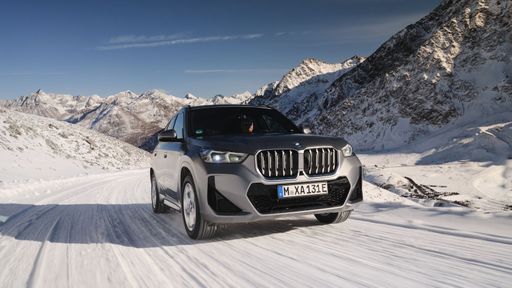 @ BMW Group Press
@ BMW Group Press
BMW iX1
BMW iX1
The BMW iX1 wraps BMW's electric ambition into a compact SUV package that feels unexpectedly premium, with sharp handling and a crisp, modern cabin that keeps the driver in charge. It's ideal for buyers who want a stylish, quiet daily driver with useful practicality and tech-savvy touches — plus enough character to make the commute feel less like a chore and more like a short joyride.
details @ BMW Group Press
@ BMW Group Press
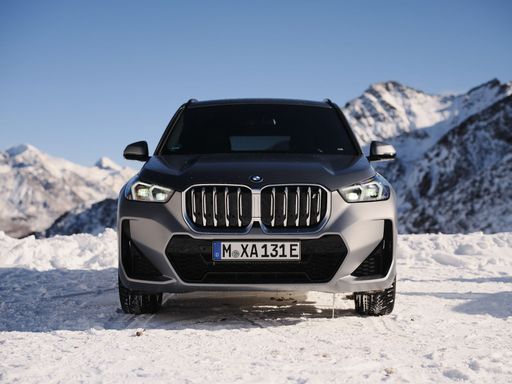 @ BMW Group Press
@ BMW Group Press
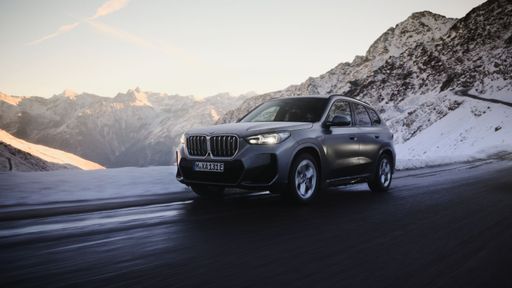 @ BMW Group Press
@ BMW Group Press
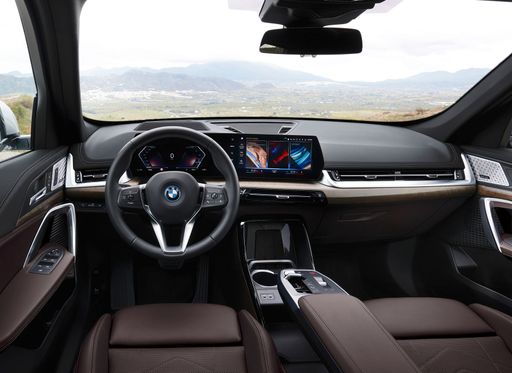 @ BMW Group Press
@ BMW Group Press
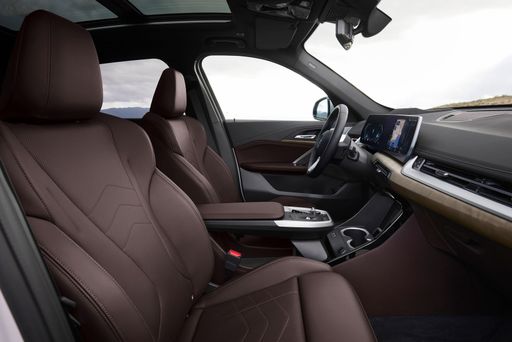 @ BMW Group Press
@ BMW Group Press
Mazda CX-5
The Mazda CX-5 blends elegant, athletic styling with a surprisingly engaging driving character, turning routine trips into small, satisfying adventures. Inside it feels thoughtfully built and comfortable, offering sensible practicality and a premium feel that punches above its price.
details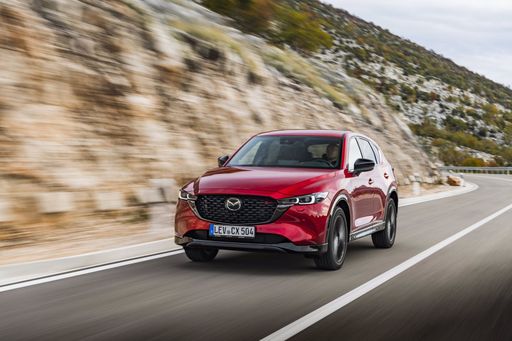 @ Mazda Motor Corporation
@ Mazda Motor Corporation
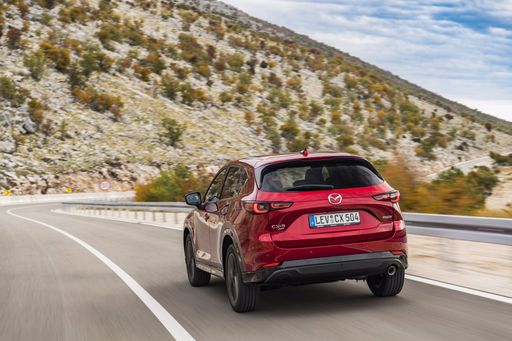 @ Mazda Motor Corporation
@ Mazda Motor Corporation
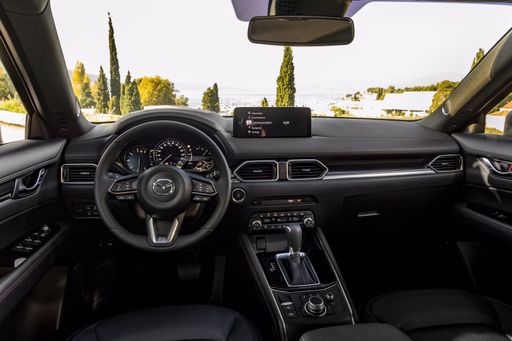 @ Mazda Motor Corporation
@ Mazda Motor Corporation
 @ BMW Group Press
@ BMW Group Press
|
 @ Mazda Motor Corporation
@ Mazda Motor Corporation
|
|
|
|
Costs and Consumption |
|
|---|---|
|
Price
41800 - 54600 £
|
Price
30000 - 39500 £
|
|
Consumption L/100km
-
|
Consumption L/100km
7 - 7.4 L
|
|
Consumption kWh/100km
15.8 - 17.1 kWh
|
Consumption kWh/100km
-
|
|
Electric Range
436 - 463 km
|
Electric Range
-
|
|
Battery Capacity
64.80 kWh
|
Battery Capacity
-
|
|
co2
0 g/km
|
co2
157 - 168 g/km
|
|
Fuel tank capacity
-
|
Fuel tank capacity
56 - 58 L
|
Dimensions and Body |
|
|---|---|
|
Body Type
SUV
|
Body Type
SUV
|
|
Seats
5
|
Seats
5
|
|
Doors
5
|
Doors
5
|
|
Curb weight
1940 - 2085 kg
|
Curb weight
1629 - 1671 kg
|
|
Trunk capacity
490 L
|
Trunk capacity
583 L
|
|
Length
4500 mm
|
Length
4690 mm
|
|
Width
1845 mm
|
Width
1860 mm
|
|
Height
1616 mm
|
Height
1695 mm
|
|
Max trunk capacity
1495 L
|
Max trunk capacity
2019 L
|
|
Payload
495 kg
|
Payload
-
|
Engine and Performance |
|
|---|---|
|
Engine Type
Electric
|
Engine Type
Petrol MHEV
|
|
Transmission
Automatic
|
Transmission
Automatic
|
|
Transmission Detail
Reduction Gearbox
|
Transmission Detail
Automatic Gearbox
|
|
Drive Type
Front-Wheel Drive, All-Wheel Drive
|
Drive Type
Front-Wheel Drive, All-Wheel Drive
|
|
Power HP
204 - 313 HP
|
Power HP
141 HP
|
|
Acceleration 0-100km/h
5.6 - 8.6 s
|
Acceleration 0-100km/h
10.5 - 10.9 s
|
|
Max Speed
170 - 180 km/h
|
Max Speed
195 km/h
|
|
Torque
250 - 494 Nm
|
Torque
238 Nm
|
|
Number of Cylinders
-
|
Number of Cylinders
4
|
|
Power kW
150 - 230 kW
|
Power kW
104 kW
|
|
Engine capacity
-
|
Engine capacity
2488 cm3
|
General |
|
|---|---|
|
Model Year
2022 - 2023
|
Model Year
2025
|
|
CO2 Efficiency Class
A
|
CO2 Efficiency Class
F
|
|
Brand
BMW
|
Brand
Mazda
|
Is the BMW iX1 offered with different drivetrains?
The BMW iX1 is available as Front-Wheel Drive or All-Wheel Drive.
The prices and data displayed are estimates based on German list prices and may vary by country. This information is not legally binding.
